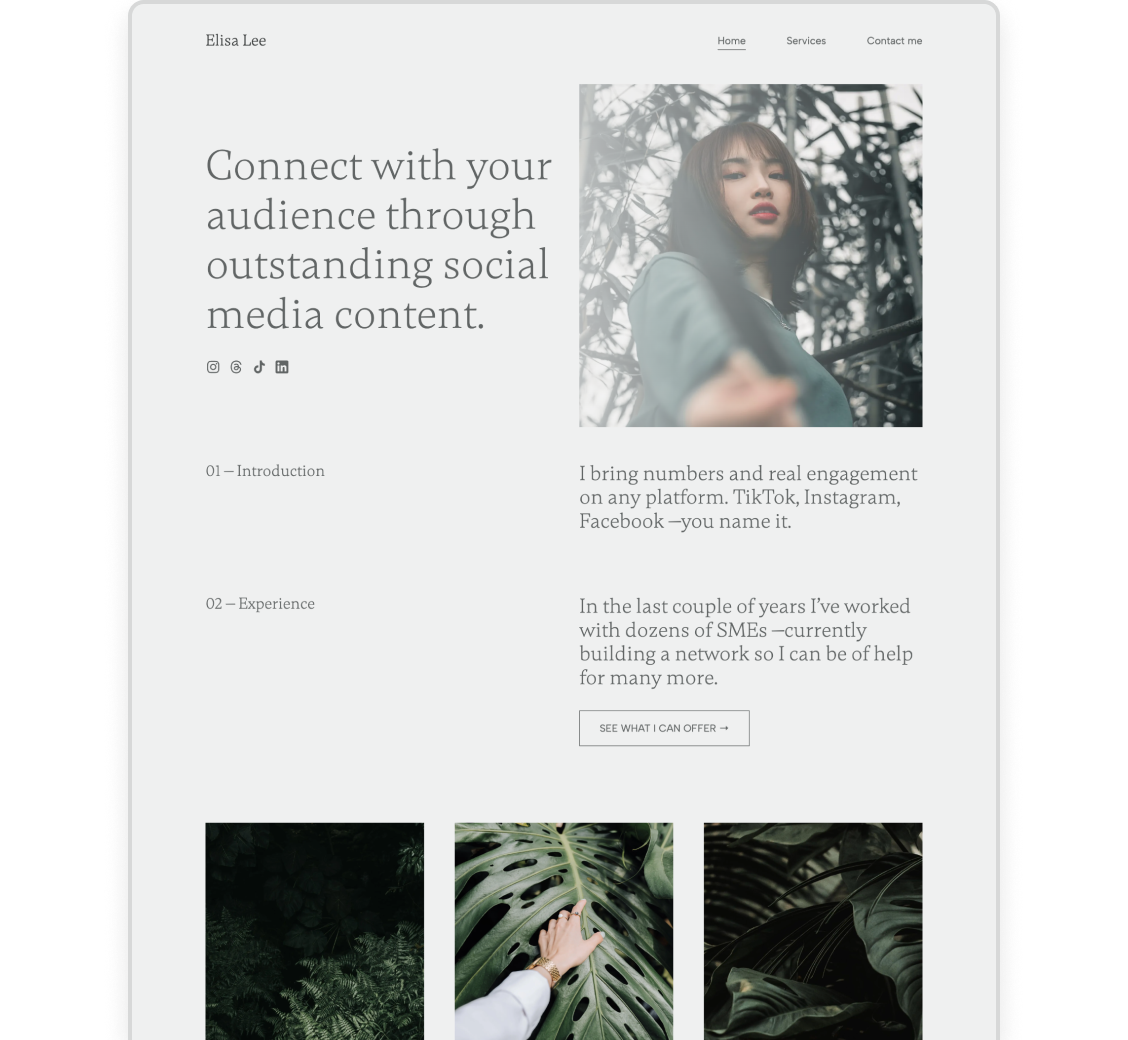The Best Marketing Planning Tools to Try in 2025
Are you tired of getting the same list of generic productivity and project management apps when looking for marketing planning tools? Tools that help you put together a marketing strategy, plan your campaigns, and measure their performance —not yet another glorified to-do list or simple kanban board.
If so, then let us show you a curated list of actual marketing planning tools that were designed to do what you need. You can plan and manage your marketing calendar, including all types of content (not just social media), collaborate with your team, share all your digital assets, track your goals, and more.
We’ll start with tools that help with your overarching marketing planning, including multiple areas of marketing. Then we’ll dive into some social media marketing tools that help with planning, creating, and scheduling content for your social media campaigns.
We tried and reviewed dozens of tools so you don’t have to. Let’s jump right in!
Marketing planning tools
1. CoSchedule
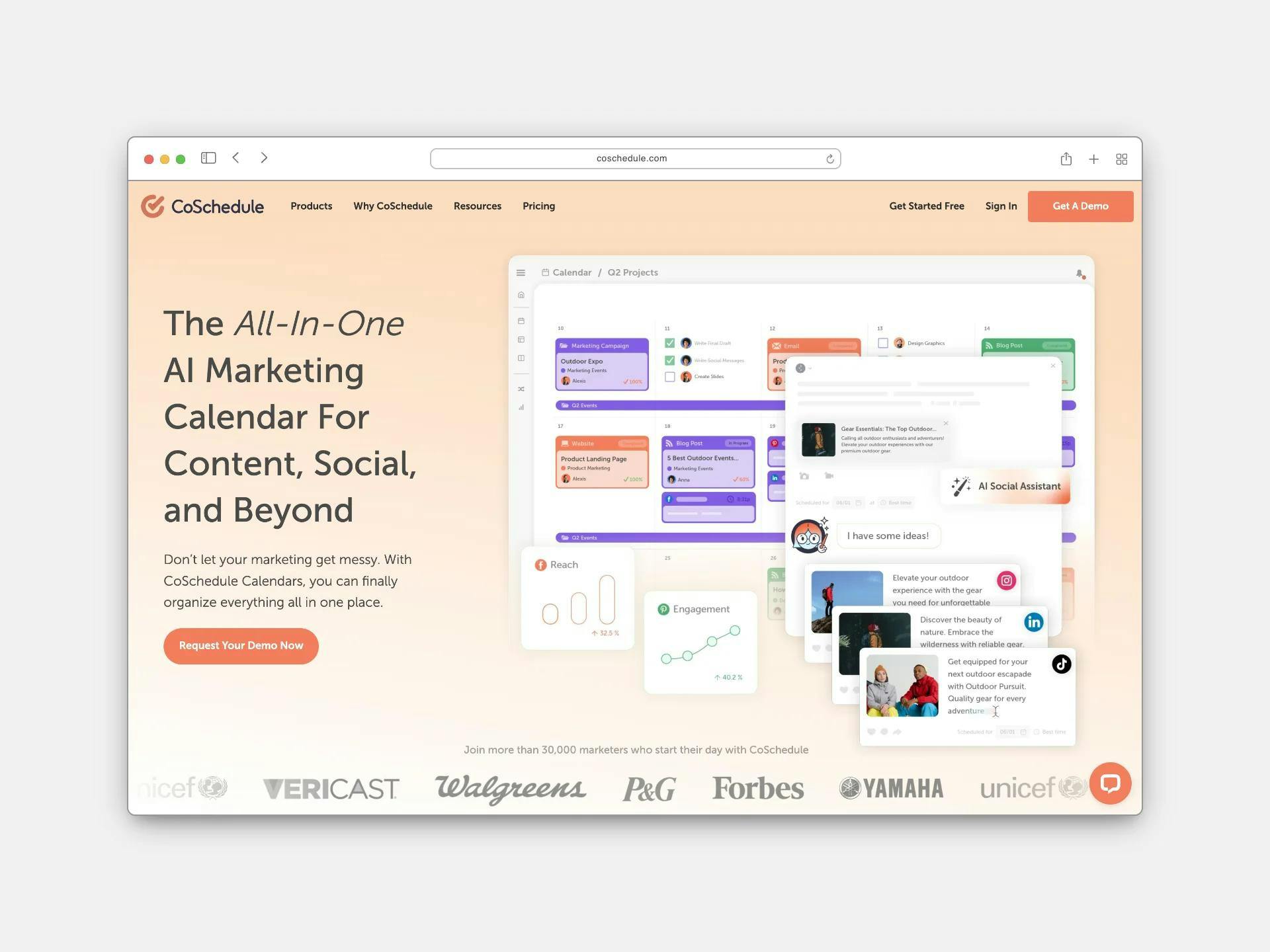
You might know CoSchedule as a social media scheduling app. That’s how they started but they’ve grown into a powerful and comprehensive marketing planning tool by today. As they write on their homepage, they’re “The All-In-One AI Marketing Calendar For Content, Social, and Beyond”, promising that you can finally organize everything all in one place.
Their free plan still focuses on simple social media planning, so if you’re out for the all-in-one marketing tool, look for their highest tier called Marketing Suite. Here’s a quick look at what you’ll find there:
- Multiple unique workspaces to organize projects and campaigns
- A publishing calendar that includes all content, events, and campaigns
- Customizable kanban boards for brainstorming, fielding requests, and keeping track of progress
- A team view/dashboard to check on who does what and when and delegate or assign tasks and visualize availability
- A dedicated high-level marketing strategy overview to report on current and past campaigns or review upcoming ones
- File and content management —you can store, organize, and share all your digital assets
- Request forms for faster, smoother, and trackable team collaboration
- Access control, advanced permissions, and multiple types of approvals for bigger marketing teams
- And of course, social publishing —just because they have grown, they haven’t abandoned their original core scheduling and publishing features
Check this page for the complete list of marketing planning features (yes, there’s more).
All that with a modern, aesthetic, and user-friendly UI.
CoSchedule is best for…
Both creators working alone or in small teams, looking for an easy-to-use tool to help with their social media content, and bigger marketing teams wanting to plan and manage their complete marketing calendar, use automations, manage their projects, and more.
Can you use CoSchedule for free?
Yes, CoSchedule has a free plan for basic social media scheduling.
With it you can connect 2 social profiles and schedule up to 15 messages. You can use the drag and drop calendar, see the best times to publish your posts, try 20 AI project templates and their AI social assistant.
How much are the paid plans?
Their “Social Calendar” plan, which includes more advanced social media planning and scheduling features, costs $19/month when billed annually or $29/month when billed monthly. It’s best for individuals and teams looking for limitless social publishing.
For the more extended marketing plans, called “Content Calendar” and “Marketing Suite”, you need to get in touch with Sales. The Content Calendar plan is aimed at teams that want all of their content and social on one calendar, while the Marketing Suite at marketing teams looking to coordinate their marketing process, projects, and team.
2. HubSpot
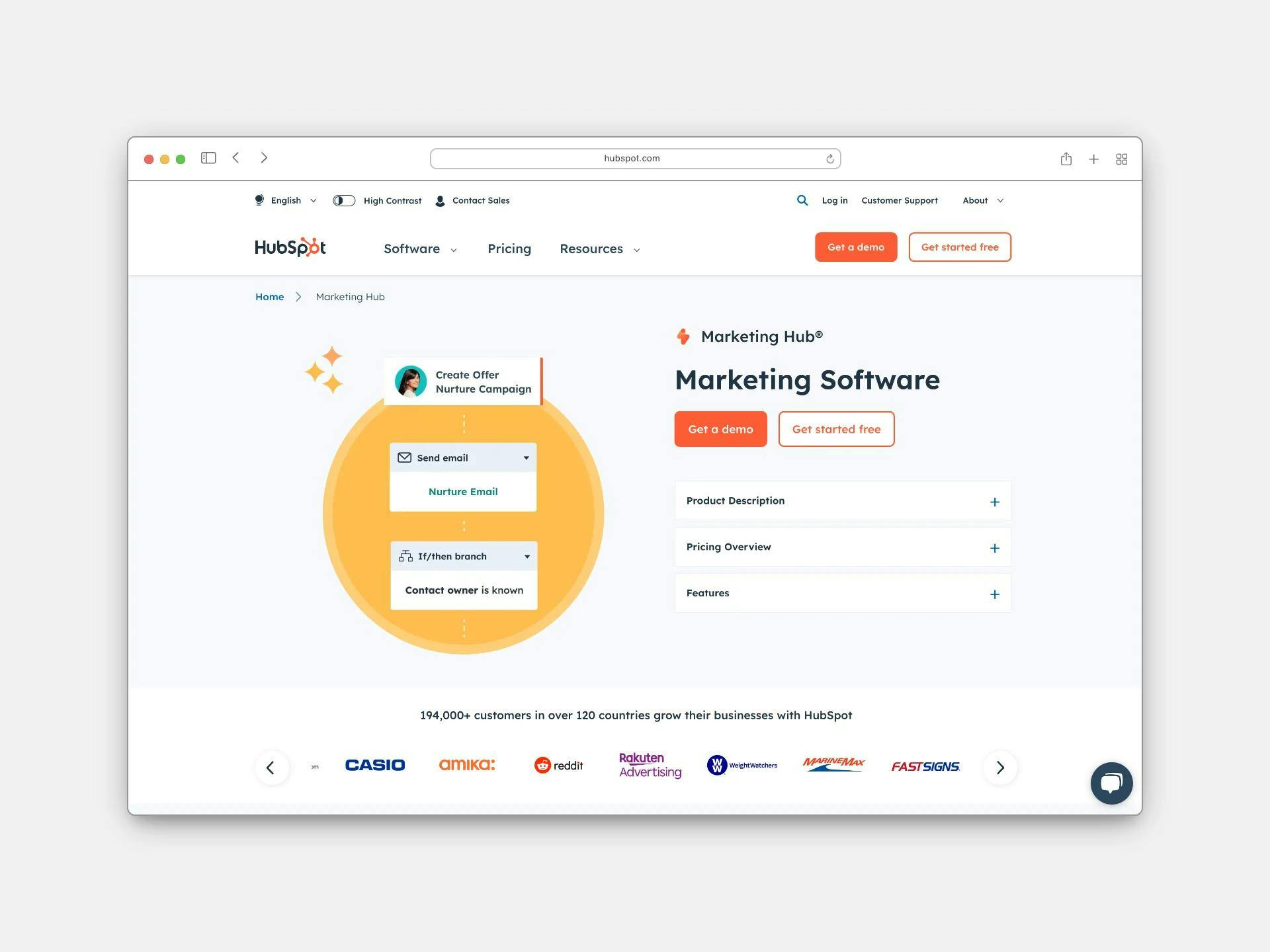
HubSpot is a robust CRM with a slew of sales-marketing and customer care features —but it’s their marketing software called Marketing Hub that we want to focus on here. As they write, it’s a “marketing software that enables you to drive revenue, save time and resources, and measure and optimize your investments. All on one easy-to-use platform.”
While it’s also an “all-in-one” platform, their range of features is still a little bit different from CoSchedule. While CoSchedule focuses on marketing planning, digital asset management, and team collaboration, HubSpot skews in the direction of execution a little bit.
Here’s a quick look at the marketing planning tools that HubSpot’s Marketing Hub has:
- CRM with advanced contact management and lead generation features
- Forms and form-based automations to make lead generation both faster and more effective
- Robust email marketing and automation tools that integrate with the other CRM and lead generation features
- Campaign tools to manage and collaborate on each project within your marketing team
- Social media management to plan and schedule all your social media content
- Marketing analytics, dashboards, and reporting to make data-based decisions and easily report on your performance
- Landing page and blog post creator, so you can plan and publish everything in one place
- SEO recommendation and help with optimizing all content you publish for better visibility
Check HubSpot’s pricing page for the full least of features. It’s an impressively long list, though we gotta say that sometimes it’s hard to visualize how some of them will work in real life.
And as you can see, these skew more toward sales-marketing features rather than strictly marketing planning tools. But for bigger companies where the strategy relies heavily on lead generation and sales-marketing collaboration, an integrated tool like this might just be the best choice.
HubSpot is best for…
Teams where marketing works together with sales on tracking, qualifying, and converting incoming leads, typically in a B2B setting.
Can you use HubSpot for free?
Yes, HubSpot has a free plan. They write it’s to “start generating and emailing new leads, and measuring your success — for free”.
It includes marketing, sales, and free CRM tools, such as website analytics, email reply tracking, one automated email action and form, one blog with Hubspot branding, basic SEO recommendations, and more.
How much are the paid plans?
Their Starter plan, which includes essential marketing tools to engage and convert leads (up to 1,000 contacts), starts at $20/month per seat if you pay annually.
The Professional plan (with up to 2,000 marketing contacts) includes 3 seats and costs $890/month. They call HubSpot with a Professional plan a comprehensive marketing software for automation, reporting, and campaigns.
Then they have Enterprise, their most powerful marketing software for advanced control and flexibility — for $3,600/month, including 5 seats.
You can check the detailed list of features included in each plan on their pricing page.
3. MarketPlan
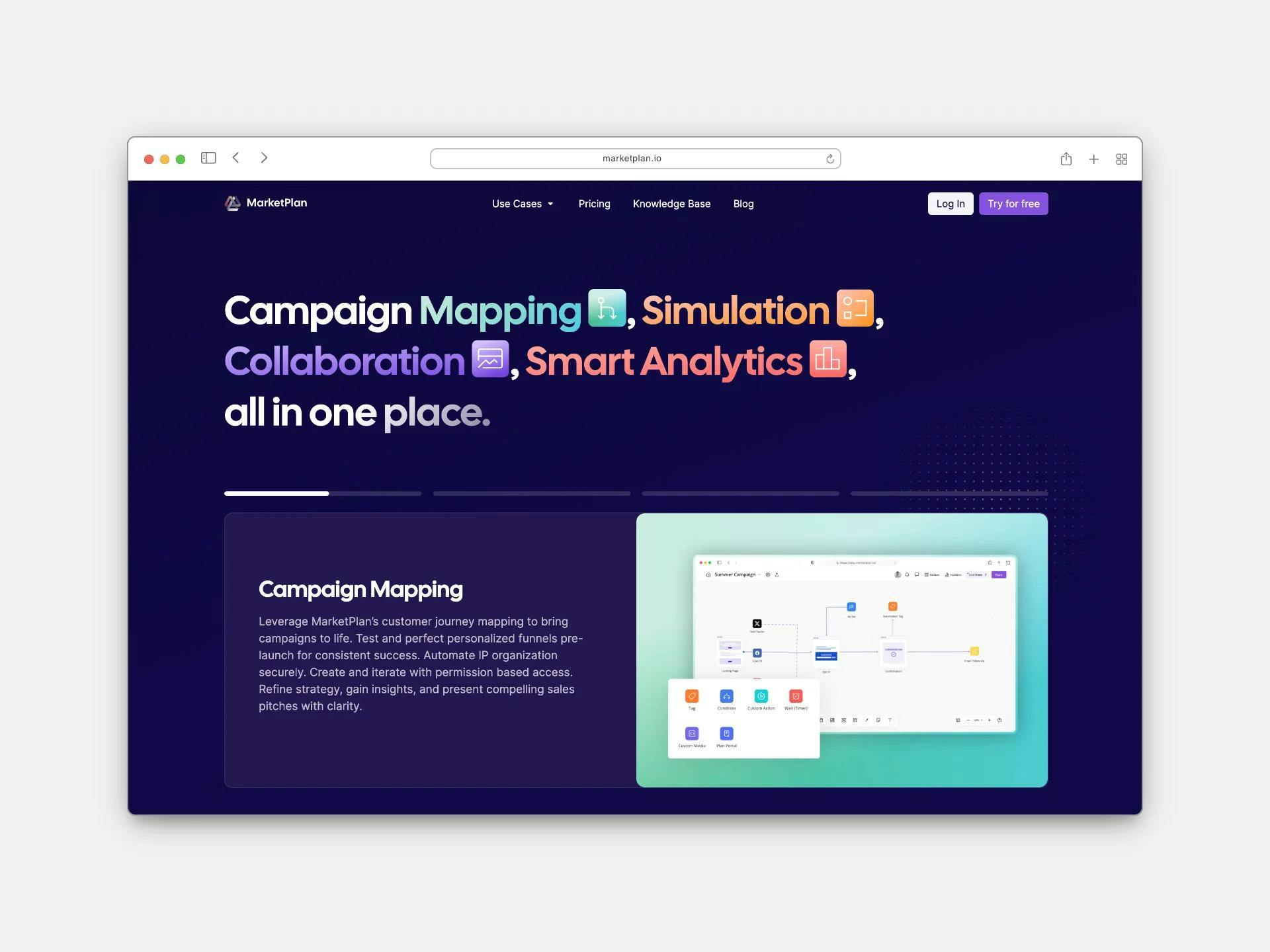
MarketPlan advertises itself as a tool for “campaign mapping, simulation, collaboration, and smart analytics”. It really is a smart little marketing planning tool with a visual editor, where you can create cards for certain elements of your campaign, then connect them as they follow each other subsequently.
With that, you can plan complete campaigns to overview the customer journey or marketing funnel and make sure you have every piece of content ready to go. Because as you click into each card, you can go more into detail: write complete emails, blog posts, and so on.
And if you’re not confident enough to jump into a campaign by mapping it out alone, MarketPlan has a campaign simulation and budgeting tools that help you gauge the potential performance opportunities of the campaign you sketched up.
What’s cool is that you can even connect your actual web pages and social media profiles, so that MarketPlan can track visitors going through your funnel real-time, giving you live statistics of your marketing campaign.
Other than these, they also have notes and task management tools, budgeting features, and the option to collaborate with your teammates.
MarketPlan is best for…
Marketers and small teams who are starting a new project, so they can plan everything in a workflow visually from the get go.
Can you use MarketPlan for free?
Only for a 30-day free trial. In the free trial, you can have one user, 3 plans, and try full team collaboration, including on images and video.
How much are the paid plans?
Their Starter plan start at $42/month when billed annually, or $49/month when billed monthly. In it you can have up to 3 users and 10 plans.
With the Pro plan you get up to 5 users and unlimited plans, plus live analytics, for $84/month when billed annually, or $99/month when billed monthly.
MarketPlan also has a plan for agencies with up to 15 users, custom domain integration, and white label branding for $152/month when billed annually, or $179/month when billed monthly.
4. Marmind
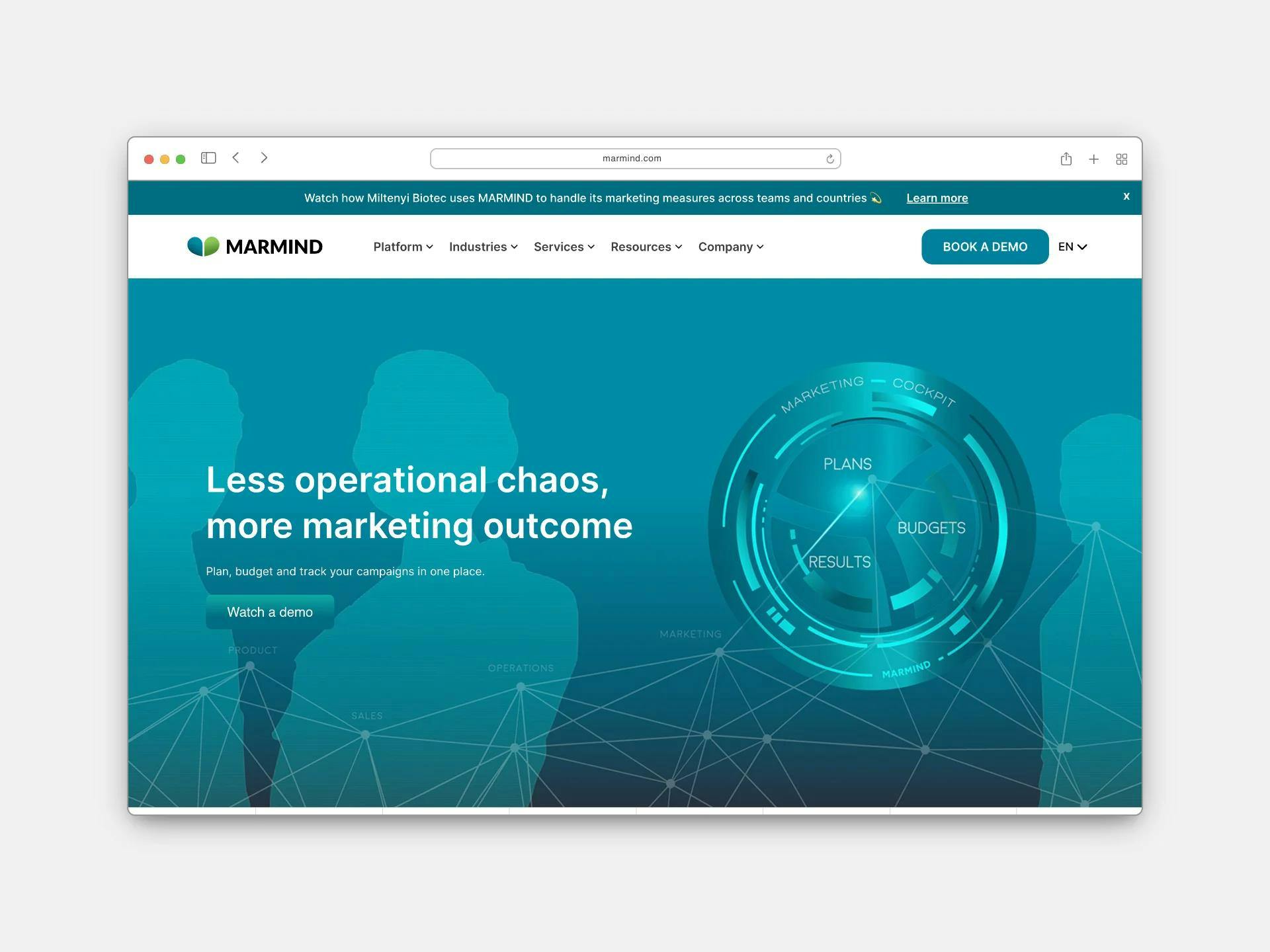
Marmind says they’re “the only marketing resource management solution that combines plans, budgets, and results in one central cockpit.”
It helps with campaign planning by breaking it down into goals, channels, and actions, facilitating cross-team collaboration with a kanban board, and managing digital assets. Marmind also has a budgeting and cost-tracking tool and a central dashboard for performance tracking, so you can go beyond planning just marketing content.
While there’s no free trial to try the app, their UI seems a little outdated, as if it was aimed at big enterprises, focusing on scalable features instead of having a trendy look.
Marmind is best for…
Bigger companies and enterprises where budgeting and collaboration across multiple teams are essential parts of the marketing planning process.
Can you use Marmind for free?
No, Marmind has no free plan. But you can book a demo if you’d like to see how it works before committing to a subscription.
How much are the paid plans?
The paid plans of Marmind are value-based, they’re not charging by user or seat. For the exact prices, you’ll need to get in touch with their sales team.
5. Marketo Engage
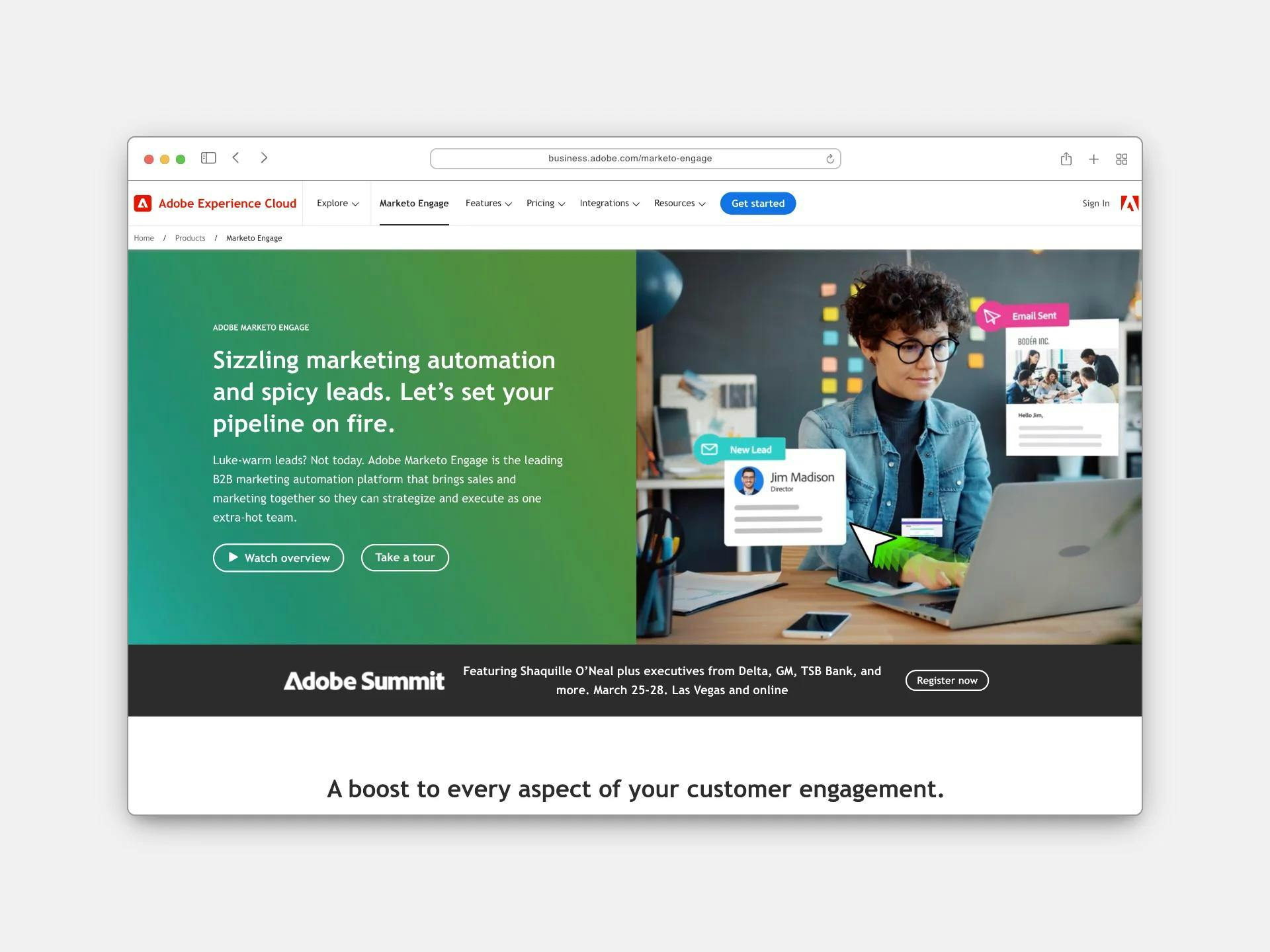
Marketo Engage is part of the Adobe Experience Cloud. It helps with the alignment of marketing and sales teams, integrates with CRMs, has marketing automation, multi-touch attribution, and can even handle email marketing.
It uses in-depth profiles and AI to send customers personalized content based on their behavior and demographic data —and gives you stats about it all in the end.
While it cannot plan and schedule web and social media content like other tools, it has helpful collaboration and automation tools.
MarketoEngage is best for…
B2B marketing teams where collaboration with the sales team is essential,with a marketing strategy based around lead generation.
Can you use Marketo Engage for free?
No, Adobe’s Marketo Engage has no free plan or free trial.
How much are the paid plans?
Adobe has four different plans for Marketo Engage: Growth, Select, Prime, and Ultimate. You need to request customized prices if you’re interested in any of them.
6. Planful
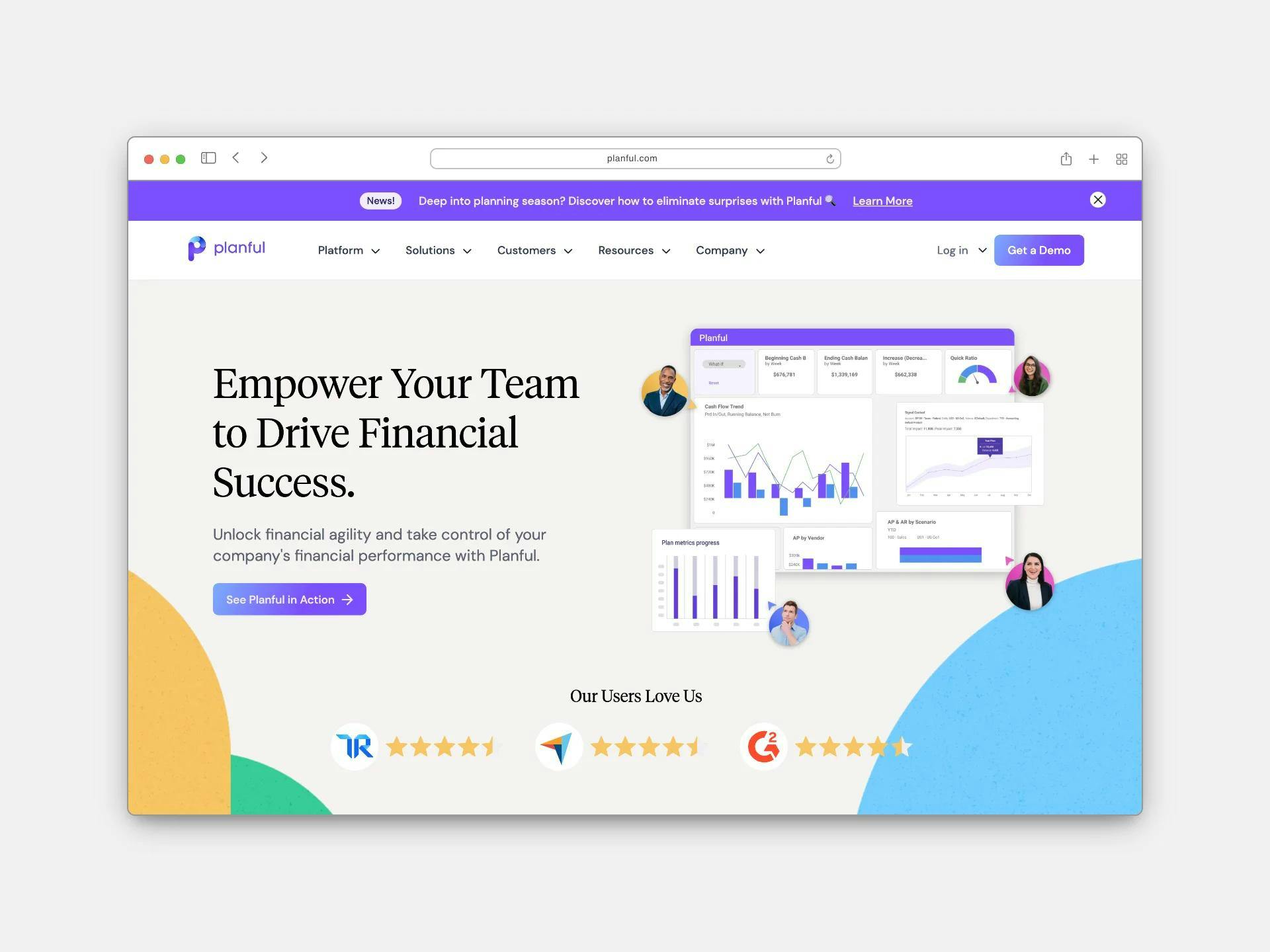
Planful is an app that was designed not only for marketing but also for finance, accounting, sales, and more. But their industry-specific features and templates make it a powerful B2B marketing planning tool.
You can plan your campaigns, assign goals and budgets to them, and measure your ROI along the way. As they write, you can “build detailed plans and budgets to reach your strategic marketing goals.”
As most project management and marketing planning software, Planful also includes task and digital asset management, so you don’t need to use separate apps to deal with those too.
Planful is best for…
Marketing teams where budgeting and the finances are important aspects of the marketing planning process.
Can you use Planful for free?
No, Planful doesn’t have a free plan or trial. You can get a demo if you’d like to see it in action.
How much are the paid plans?
Planful doesn’t have a pricing page with information about plans and prices. To learn more, you’ll have to get in touch with their sales team.
7. Keen
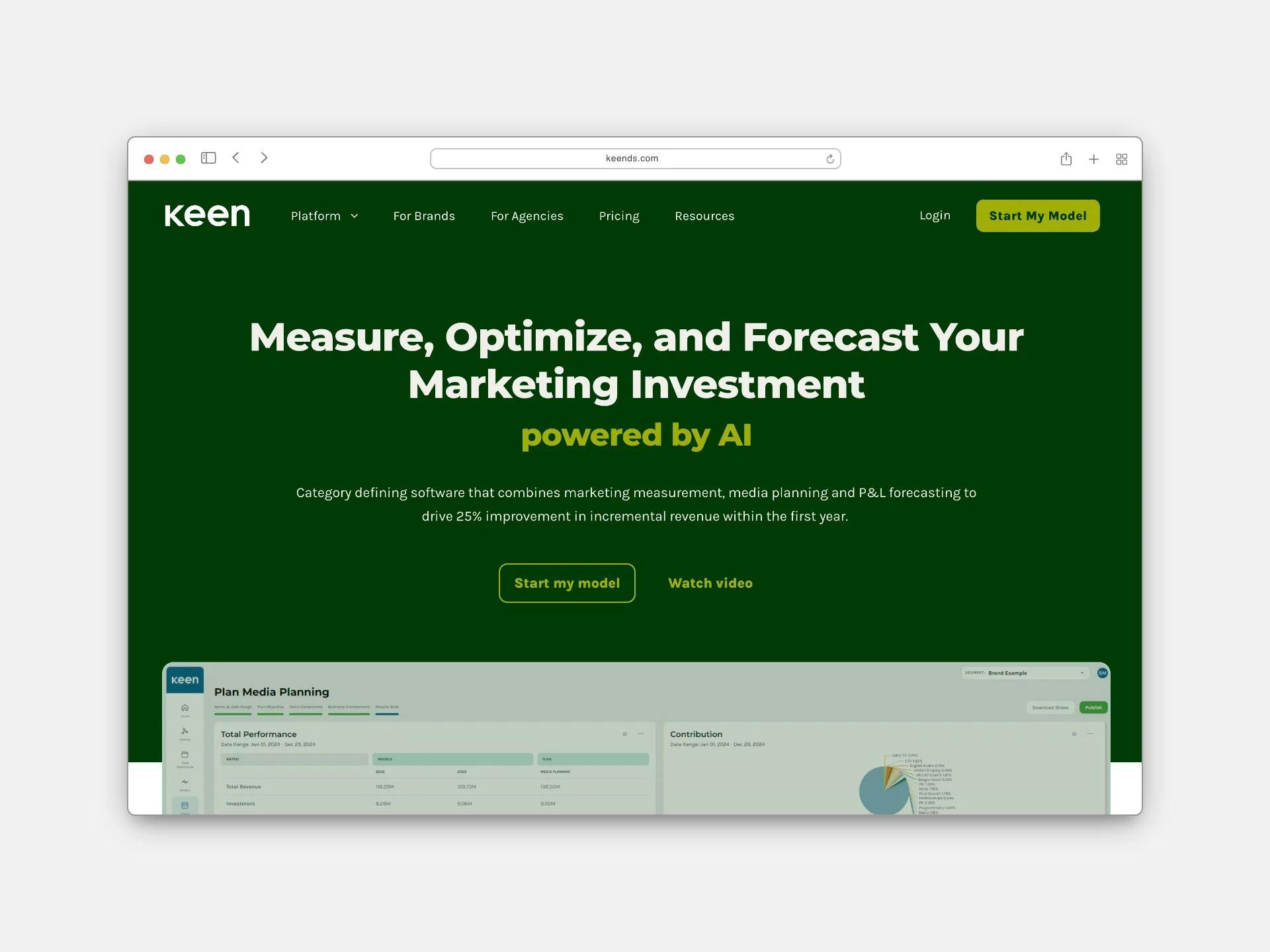
Keen is a dedicated marketing investment planning tool. As they write, it’s to “measure, optimize, and forecast your marketing investment” with the help of AI. It combines media planning, marketing measurement, and forecasting to help increase revenue —they actually promise a 25% improvement within the first year.
How? Keen takes your marketing and financial data from previous years and combines it with industry numbers. It then analyses it with the help of AI and gives you a forecast that helps plan paid marketing channels’ activities and optimize performance.
Keen is best for…
Enterprises with bigger budgets, doing multi-channel marketing and media buying.
Can you use Keen for free?
Yes! Keen has a free plan called Keen Explorer. While it doesn’t include POS data, you can track 10 marketing channels and get 3 standard future scenarios.
How much are the paid plans?
All of Keen’s plans are billed annually, starting from $1000/month. They have four different plans: Quick Start, Challenger, Disruptor, and Influencer.
8. Voluum

Voluum is a powerful performance tracking and optimization tool specifically designed for marketers who need detailed insights into their campaigns. It helps track various metrics across multiple channels and provides real-time data to optimize performance.
Voluum's main features include:
- Advanced Tracking: Monitor every aspect of your campaigns, including clicks, conversions, and ROI.
- Real-Time Analytics: Get immediate insights and reports to make data-driven decisions.
- Traffic Distribution AI: Automatically optimize traffic flow based on performance data.
- Integrations: Connect with other marketing tools and platforms for seamless data synchronization.
Voluum is best for…
Marketers and agencies looking for a robust tool to track and optimize their multi-channel marketing campaigns in real time.
Can you use Voluum for free?
No, Voluum does not offer a free plan. However, they provide a 14-day free trial to explore all features.
How much are the paid plans?
Voluum's pricing starts at $149/month for the Profit plan, which includes advanced reporting and automated optimization features.
The more advanced plans, like the Scale plan, offer higher data limits and dedicated support for large-scale operations for individuals.
As for larger businesses, there are also business plans that include all the features of the Profit plan plus custom API integrations, enhanced API security, and dedicated account management, designed for enterprises with extensive tracking needs.
Create a marketing portfolio to showcase your projects. Write about their background, what your tasks were, how you approached it, and how your work performed. Make sure you include images too to make it more visually appealing.
Since marketing planning often involves or even revolves around social media content, we wanted to include a few social media marketing tools in their own category. These can help you plan, create, and schedule your posts for multiple social media platforms, track their performance, and even engage with your followers.
1. Planable
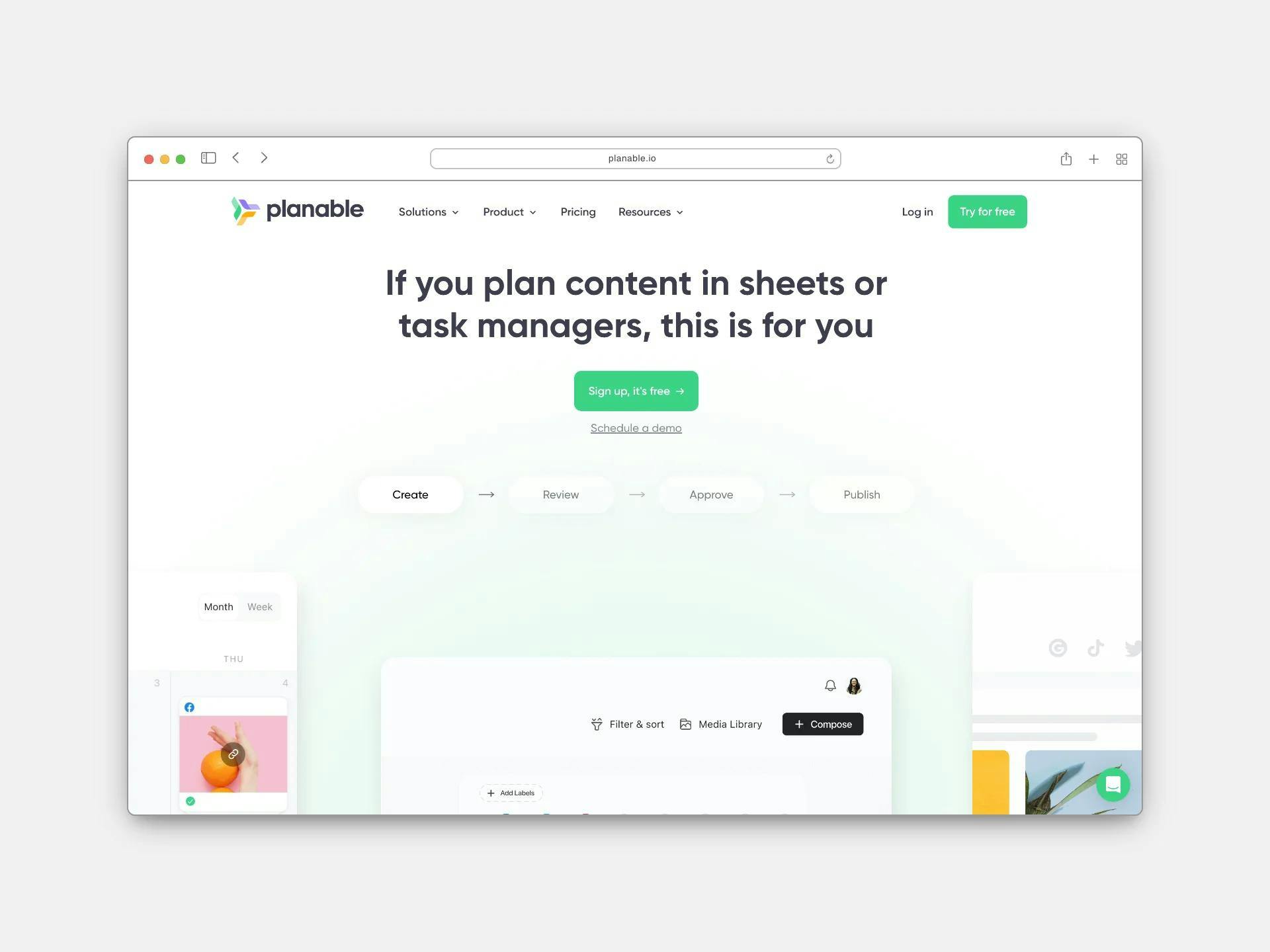
Planable is a social media marketing tool that helps teams collaborate on planning, creating, and scheduling content together. It also has a marketing calendar feature where you can also plan non-social content such as newsletters, blog posts, and ads.
That said, while Planable is still a social-first tool, if you only need a handful of other areas covered (like the ads, blog posts, and emails mentioned above), it can be a great all-in-one marketing planning tool for you.
We gotta also highlight their brilliant tagline: “If you plan content in sheets or task managers, this is for you”. If that doesn’t call their target audience out, then we don’t know what would.
Planable is best for…
Marketing teams with a strong social media presence and other types of content that they need to plan and organize all in one place.
Can you use Planable for free?
Yes, Planable has a free plan where you can schedule up to 50 social media posts at a time.
How much are the paid plans?
Planable has three paid plans: Basic, Pro, and Enterprise.
Basic starts from $11/month for one user when billed annually, or $13/month when billed Yearly. In this plan you already get unlimited posts, 4 pages per workspace, and 2 types of approvals. You can also use both the Feed and Calendar views.
With the Pro plan, you also gain the Grid view, as well as the ability to save posts and ads —and you can have more pages and types of approvals. All that for $22/month per user when billed annually, or $26/month per user when billed monthly.
For the Enterprise plan, you’ll need to get in touch with the team for custom pricing.
2. Buffer
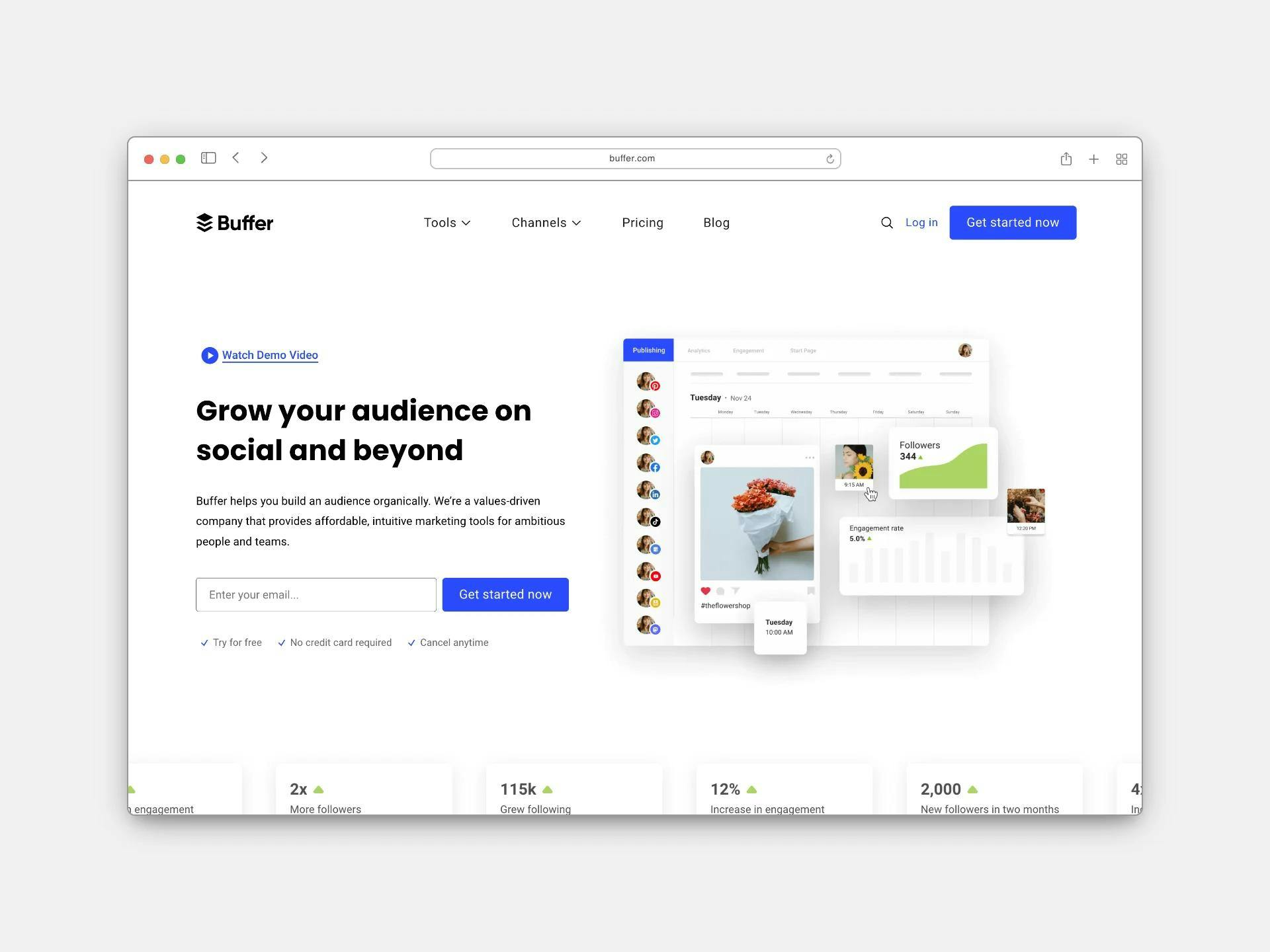
Buffer is a social media scheduling tool with a free plan that lets you add 3 social channels. You can choose from:
- TikTok
- Google Business Profile
- Mastodon
- YouTube
This planning tool not only lets you draft and schedule, but will also tell you the best times to post, help you create content with an AI assistant, and give you in-depth insights on the performance in the end.
And as a little extra, you can “create and share beautiful reports” as they write, so you can easily present everything to your team, manager, or stakeholders.
Buffer also has a link-in-bio tool available in the free plan called Start Page. You can use blocks to put your page together and feature not just links, but also text, images, videos, social links, and more —all customized to the style you want.
Buffer is best for…
Smaller marketing teams and businesses who need an easy-to-use social media scheduling tool with affordable plans and a few neat extra features.
Can you use Buffer for free?
Yes, Buffer has a free plan for “individuals and businesses getting started with social media”. With it, you can connect 3 social media channels and use their planning and publishing tools, landing page builder, and AI assistant.
How much are the paid plans?
Buffer’s smallest paid plan is called Essentials and they recommend it for “professionals who use publishing, analytics & engagement tools.” It costs $6/month for one channel and you have to pay the same amount for every other channel you add. Apart from the basic features included in the free plan, here you also get engagement tools and analytic reports.
Want to work with a team and/or clients? The Team plan gives you that option, you’ll just have to pay twice as much per channel —but with unlimited members. So compared to user-based pricing plans at other tools, it’s not that bad.
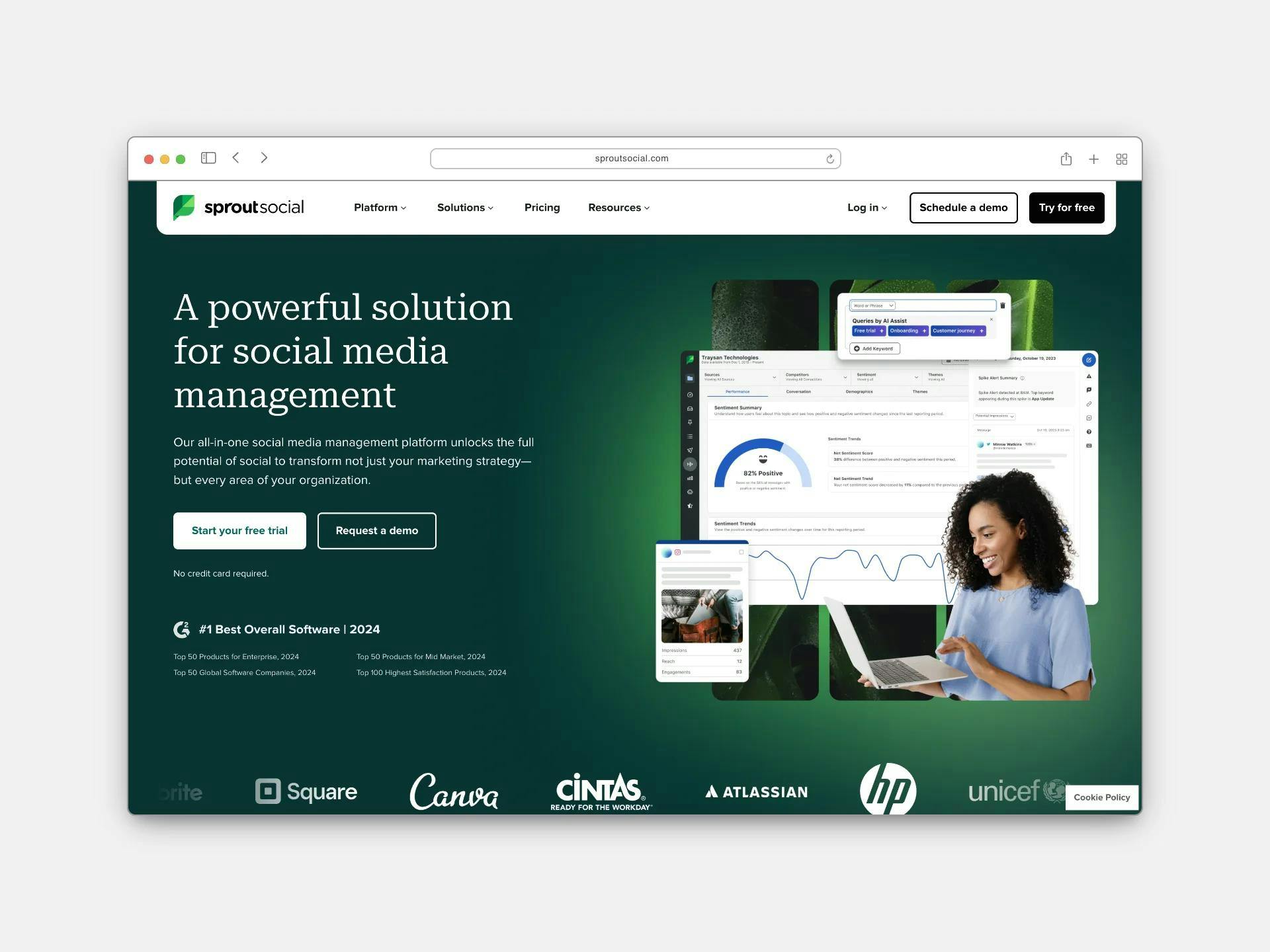
Sprout is a social media marketing tool that helps marketers:
- plan, create, and publish content,
- streamline and scale customer engagement, and
- check analytics as its core feature.
It can also prove social media ROI with custom data and reports, help with social listening, build and manage influencer partnerships, and encourage employee advocacy.
Sprout Social is best for…
Marketing teams whose main focus is social media and need more than just a simple scheduling tool.
Can you use Sprout Social for free?
Only for a 30-day free trial, otherwise Sprout Social doesn’t have a free plan.
How much are the paid plans?
Sprout has four plans: Standard, Professional, Advanced, and Enterprise.
Standard starts from $199/month per seat when billed annually, or $249/month per seat when billed monthly. It includes 5 social profiles and their all-in-one social inbox, as well as the social media content calendar that lets you draft, schedule, and publish posts.
For unlimited social profiles, message tagging, custom workflows, and other advanced features, you can choose Professional for $299/month per seat when billed annually, or $399/month per seat when billed monthly.
4. Hootsuite
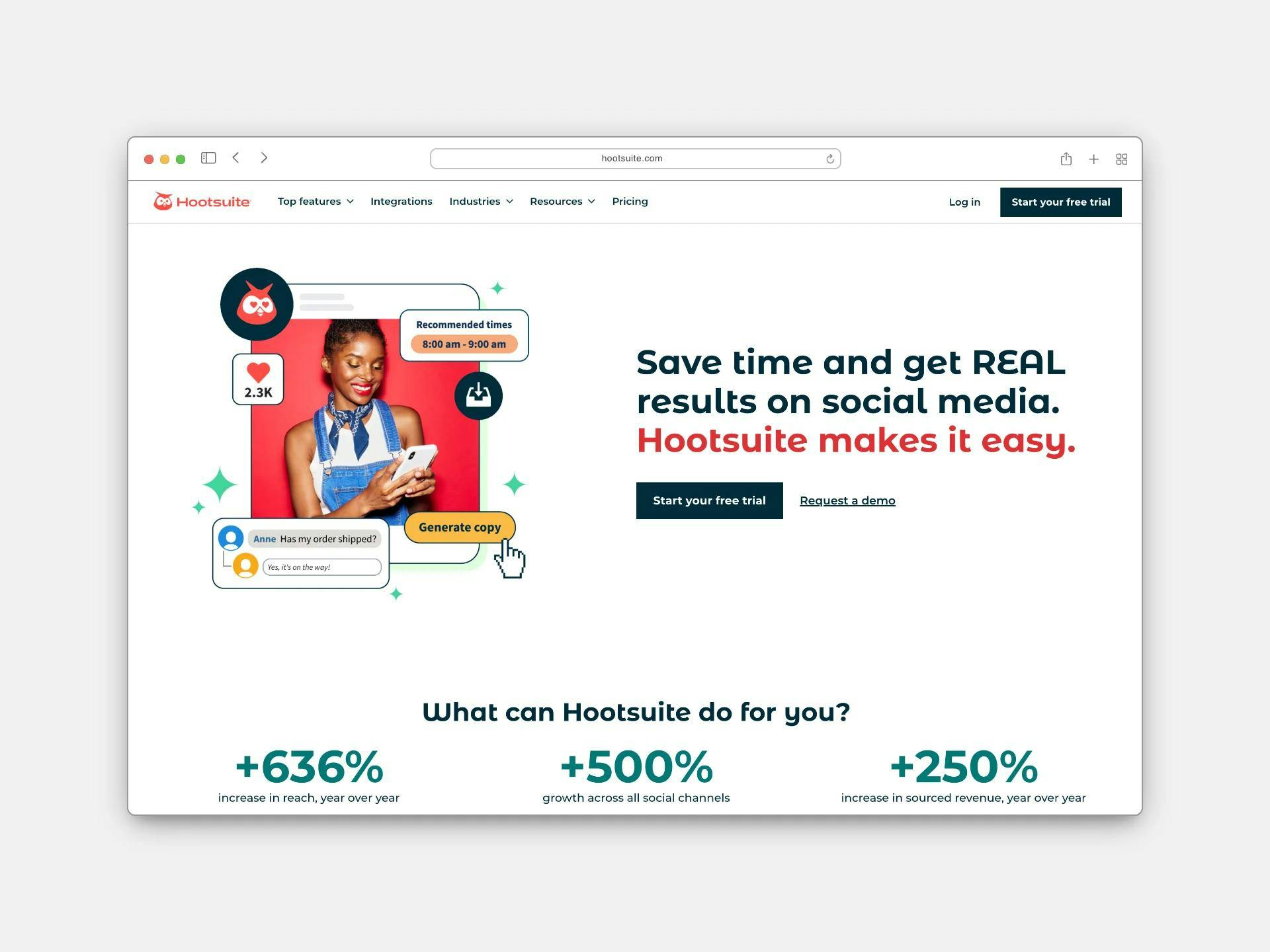
Hootsuite is a social media tool with which you can:
- schedule and publish posts,
- do social listening,
- engage with followers,
- reply to messages,
- create content with AI,
- and help employee advocacy.
It has a lot of nifty features to make social media marketers’ lives easier and team collaboration smoother. Things like their Canva integration, link shortening and tracking, team permissions and approval workflows, or their benchmarking tool. Check out their pricing page for the full list —it’s a long one!
Hootsuite is best for…
Marketing teams in bigger companies. Why? It’s a little bit harder to learn and use than other tools as it’s packed with features. With that and features like bulk scheduling, plus the higher price tag, it’s better for big enterprises, rather than small teams.
Can you use Hootsuite for free?
Hootsuite has a 30-day free trial for the Professional and Team plans, but there is no free-forever plan to use.
How much are the paid plans?
Hootsuite’s Professional plan costs $99/ month, and the Team plan $249/month — both are billed annually, not including taxes. They also have an interesting option where if you skip the 30-day free trial and pay right away, they give you a 20% discount for your vote of confidence.
The Professional plan will give you 1 user and 10 social accounts and includes features like unlimited scheduling, posting time recommendations, Canva integration, one inbox for all your socials, and analytics.
With the Team plan you get 3 users and 20 social accounts, and extra features like a link in bio tool, automatic link tracking, team permissions, or a custom-branded URL.
5. Later
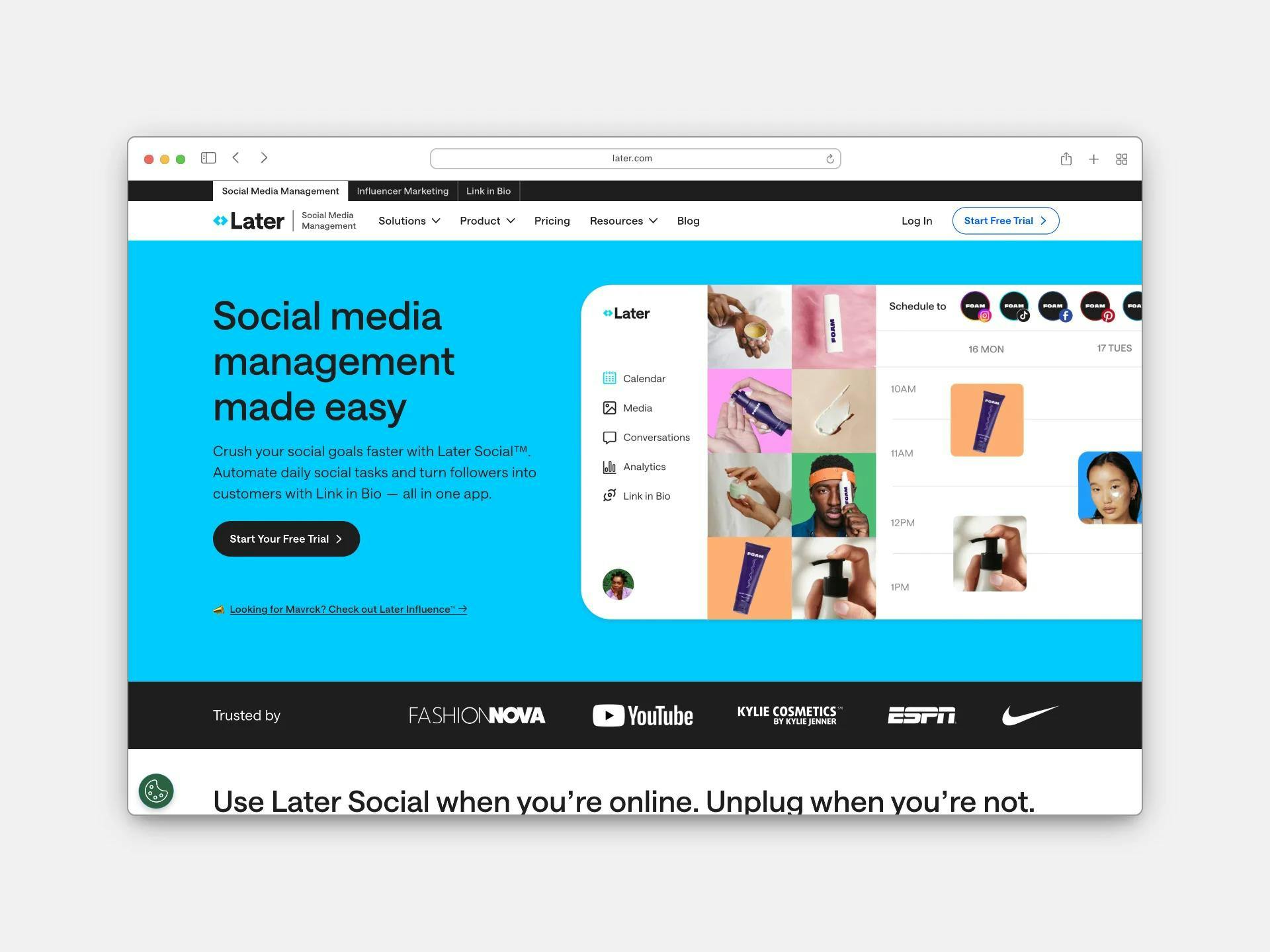
Later is a pretty well-known social media scheduling app, where you can plan, create, and schedule your posts.
Later works with social sets: a set includes one profile for each platform they support. So for example, if you have one social set, you can connect one Instagram, one TikTok, and one Facebook account. But if you wanted to have two Instagram accounts alongside one TikTok profile, you’d need two social sets for that already.
So make sure you consider that when choosing your scheduling tool.
They’ve recently rebranded after merging with Mavrck, which gave them a more corporate look but also a few new influencer marketing tools.
Later also has its own Link in Bio app and promises that you’ll be able to “crush your social goals faster” by automating your daily social media tasks. They have content creation helps in the form of photo cropping, adding filters and text on images, trimming videos, and helping you find UGC content.
Later is best for…
Brands looking for a simple social media scheduling tool with additional features making their influencer marketing and UGC reposting easier.
Can you use Later for free?
Later has a 14-day free trial for all 3 of their plans but no free-forever plan you could use.
How much are the paid plans?
Later’s starter plan is $25/month when billed monthly and it includes one social set, one user, and 30 posts per social profile. It only has limited insights with only up to 3 months of data and 5 credits for their AI features.
Their Growth plan is $45/month with 3 social sets, 3 users, and 150 posts per profile, including full analytics. This is also the plan that includes their collaboration and brand management tools. They write it’s the best choice for small teams.
For unlimited posts, 6 social sets, and 6 users, you’d have to upgrade to their Advanced plan, which costs $80/month. For the full list of features in each plan, check out Later’s pricing page.
Are there any other marketing planning tools you know and love that we’ve missed from the list? Shoot us an email, we love exploring new tools!
